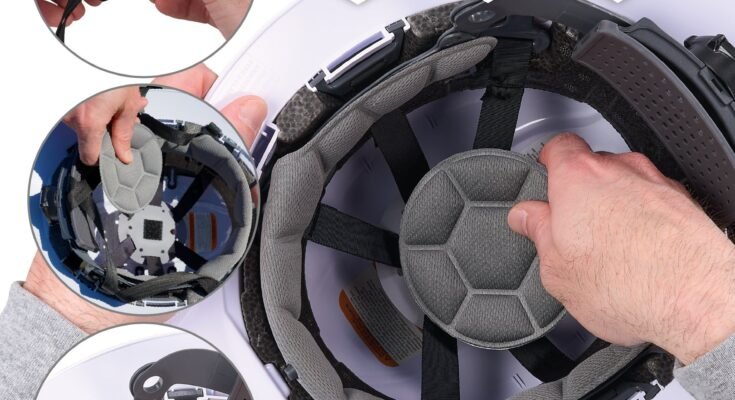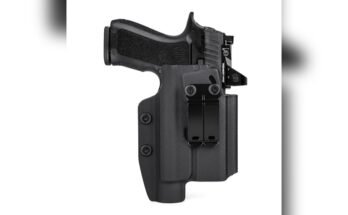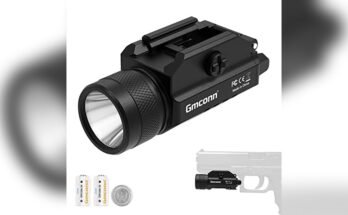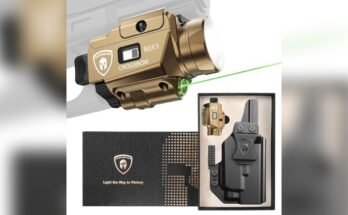I’ve tested more than a dozen magnetic holsters over the years, from slim bedside mounts to car-ready rigs and minimalist carry clips. Here’s the short answer to how do magnetic holsters work: they use strong neodymium magnets to hold a ferromagnetic slide or accessory in place, balancing retention and quick access. Done right, they feel simple, fast, and secure. Done wrong, they can be noisy, weak, or unsafe. In this guide, I break down the tech, the trade-offs, and the real-world tips that help you choose well and carry smart.

Source: www.amazon.com
What Is A Magnetic Holster?
Magnetic holsters use permanent magnets, usually neodymium, to hold a firearm by its slide, frame insert, or a metal plate. Some are stand-alone mounts for home or vehicle use. Others blend magnets into a holster shell to boost retention.
Key idea: the magnet creates holding force without straps or tension screws. That force must be strong enough to resist bumps but smooth enough to let you draw on purpose.
Common formats:
- Minimalist clip with a magnet that grabs the slide for pocket or waistband carry.
- Vehicle or desk mount to stage a pistol within reach in a fixed location.
- Hybrid shell holster with magnets plus molded retention for better security.
Big note on safety: an open magnet mount can leave the trigger exposed. Choose designs that guard the trigger or position the gun so the trigger is blocked from accidental contact.

Source: www.ebay.com
The Physics: Magnets, Ferromagnetism, Retention Force
Neodymium magnets attract ferromagnetic metals like steel. Most pistol slides are steel and will stick. Aluminum frames and polymer parts are not magnetic. Some stainless steels are low-attraction; check your gun.
What controls holding strength:
- Magnet grade and size stronger magnets hold more, but can feel “sticky” on draw.
- Air gap any layer between the magnet and slide felt-lined pads reduces force quickly.
- Contact area more flat, clean contact equals higher grip.
- Shear vs. pull-off magnets resist sliding differently than straight pull. Real-world bumps are often shear.
Practical takeaway: test retention in the way you plan to carry. Don’t assume a strong pull-off means good shear resistance in a moving car or on a belt.
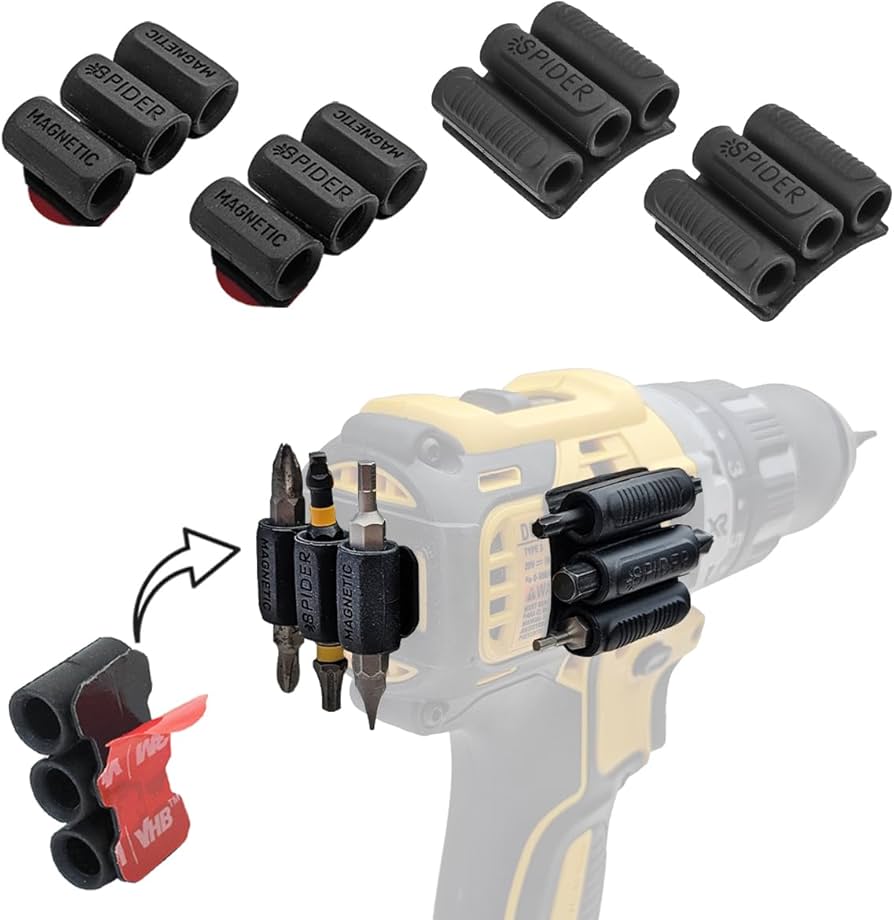
Source: www.amazon.com
Core Components And Build Quality
What I look for when I review a magnetic holster:
- Magnet array sealed neodymium magnets with corrosion protection to avoid flaking over time.
- Housing material Kydex, polymer, or metal that keeps magnets aligned under stress.
- Trigger protection a molded shell or a mounting angle that shields the trigger area.
- Hardware quality stainless screws, thread locker, and robust mounting plates for fixed setups.
- Finish and padding a thin rubber or felt layer can reduce wear on the slide while keeping enough grip.
Small detail, big impact: cheap adhesives and thin plastics deform with heat in a car. Choose materials rated for high temperatures if you live in hot climates.

Source: www.amazon.com
How Retention And Release Feel In Real Use
A good magnetic holster should feel predictable. No jolts. No surprise releases. You want a smooth, repeatable draw.
What you’ll feel:
- Initial “snap” as the slide meets the magnet.
- Progressive resistance that gives way with a straight, deliberate pull.
- Slight audible click or thud when docking.
My field notes:
- Strong magnets can “print” your draw path. Practice a straight lift and a firm grip before moving laterally.
- Add a tiny bit of inward pressure on holsters that combine magnets and molded retention to avoid scraping.
Test routine I trust:
- 10 light jumps and brisk steps does it stay put?
- Seatbelt on, off, hard braking in a safe test area does it shift?
- Timed draws with an unloaded gun aim for consistent times without overshooting your grip.

Source: www.amazon.com
Carry Methods And Use Cases
Magnetic holsters shine in fast-access staging and minimalist setups. They are not one-size-fits-all.
Where they work well:
- Bedside or desk secure the gun out of the way but within reach, with trigger protection.
- Vehicle mounting quick access when lawful and safe in your state. Secure the mount to solid structure.
- Range or shop storage staging pistols while working on gear or cleaning.
- Minimalist carry for certain small pistols where a light, low-profile option is desired.
Where to think twice:
- Rough, active movement if you run, climb, or wrestle with kids, test harder for retention.
- Exposed trigger environments an open magnet plus an exposed trigger is a no-go for carry.
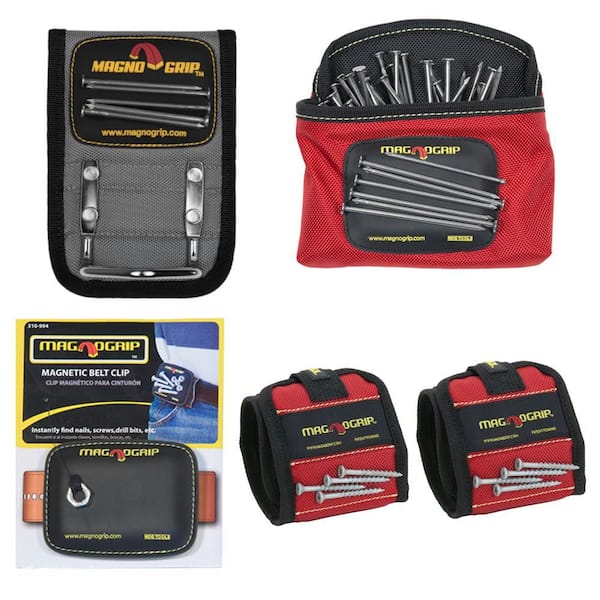
Source: www.homedepot.com
Safety, Testing, And Legal Considerations
Safety first:
- Always block the trigger a holster that covers the trigger guard reduces negligent discharges.
- Muzzle discipline even in staging. Angle the muzzle in a safe direction.
- Unloaded tests first run all setup and shake tests with an unloaded firearm.
Home and vehicle:
- Know storage laws many places require locked storage or restrict vehicle staging.
- Secure mounting use rated screws into solid structure, not thin trim.
EMI and gear checks:
- Magnets can affect compasses, some cards, or magnetic strips. Keep key cards and hard drives away.
- Red dots, lights, and optics are usually fine, but make contact only with the slide, not electronics.
Pros, Cons, And Who They Fit Best
Pros:
- Fast access no straps or thumb breaks to manage.
- Simple design fewer parts that can fail.
- Flexible placement desks, vehicles, safes, or specific carry spots.
Cons:
- Trigger exposure risk with open mounts.
- Variable attraction not all slides are equally magnetic.
- Heat and vibration cheaper builds can fail in cars.
Best for:
- Home or office staging with trigger protection.
- Vehicle users who want quick access and can mount to solid structure.
- Minimalist carriers who value speed and low bulk and have a gun with a strong magnetic slide.
Buying Checklist And Setup Tips
What to look for:
- Verified magnet strength look for tested load ratings in both pull-off and shear.
- Trigger guard coverage or mounting geometry that shields the trigger.
- Quality hardware metal backing plates and thread-locked screws.
- Fit to your firearm confirm your slide is ferromagnetic and makes solid contact.
- Heat resistance materials rated for car interiors.
Setup steps:
- Degrease contact surfaces alcohol on the slide contact area and the mount face.
- Dry fit and mark draw angle practice draws, then mount permanently.
- Torque and re-check tighten after 24 hours; re-check monthly.
- Practice with an unloaded gun until your motions are smooth and safe.
Care, Maintenance, And Troubleshooting
Care:
- Wipe magnets and contact points dust reduces grip.
- Check hardware tightness vibration can loosen screws over time.
- Inspect for wear look for chipped plating or cracked plastic.
Troubleshooting:
- Weak hold clean surfaces, reduce padding, or upgrade magnet strength.
- Noisy docking add a thin felt pad but confirm retention after.
- Slide scratches use a thin protective layer and ensure alignment to avoid edge grinding.
When to replace:
- Cracked magnet housing, flaking magnet plating, or stripped screws are signs to retire the unit.
Frequently Asked Questions Of How Do Magnetic Holsters Work?
Do magnetic holsters damage a gun’s finish?
Light contact can cause minor rub marks over time, like any rigid holster. Clean surfaces and use a thin protective pad to reduce wear. If you see scratches, check alignment and pressure.
Will a magnetic holster work with my stainless or aluminum slide?
Some stainless steels are weakly magnetic, and aluminum is not. Test with a small magnet on the slide. If attraction is weak, choose a different holster type or a model that adds mechanical retention.
Is it safe to mount a magnetic holster in a car?
It can be, if lawful in your area, properly mounted, and the trigger is protected. Use solid anchors, avoid flimsy panels, and verify retention with braking and bumps using an unloaded gun.
Can magnets affect optics, red dots, or lights?
Magnets do not normally harm modern optics or lights. Avoid direct contact with electronics. Keep magnetic mounts away from compasses, key cards, and magnetic strips.
How strong should the magnet be?
Look for published shear and pull-off ratings that exceed your use case. For vehicle or home mounts, many users prefer ratings well above the unloaded pistol weight to handle bumps and angle changes.
Are magnetic holsters good for concealed carry?
They can work in certain minimalist setups, but only if the trigger is fully protected and retention is proven. Many carriers still prefer molded holsters with adjustable mechanical retention for daily use.
How do I practice a safe draw with a magnetic holster?
Start unloaded. Use a straight lift, build a firm firing grip before movement, and keep the muzzle in a safe direction. Add speed only after you are smooth and consistent.
Conclusion
Magnetic holsters hold a firearm with powerful neodymium magnets that grab the slide, giving fast access with simple hardware. The best ones protect the trigger, resist bumps, and feel smooth on the draw. Test your setup, mount it right, and keep it clean. If you do, a magnetic holster can be a smart, streamlined part of your everyday kit.
Take the next step: match a quality magnetic holster to your firearm, verify retention at home with safe tests, and practice until it feels second nature. Want more guides and real-world tests? Subscribe, share your questions, or drop a comment with your setup goals.
Watch This Video on How do magnetic holsters work?
